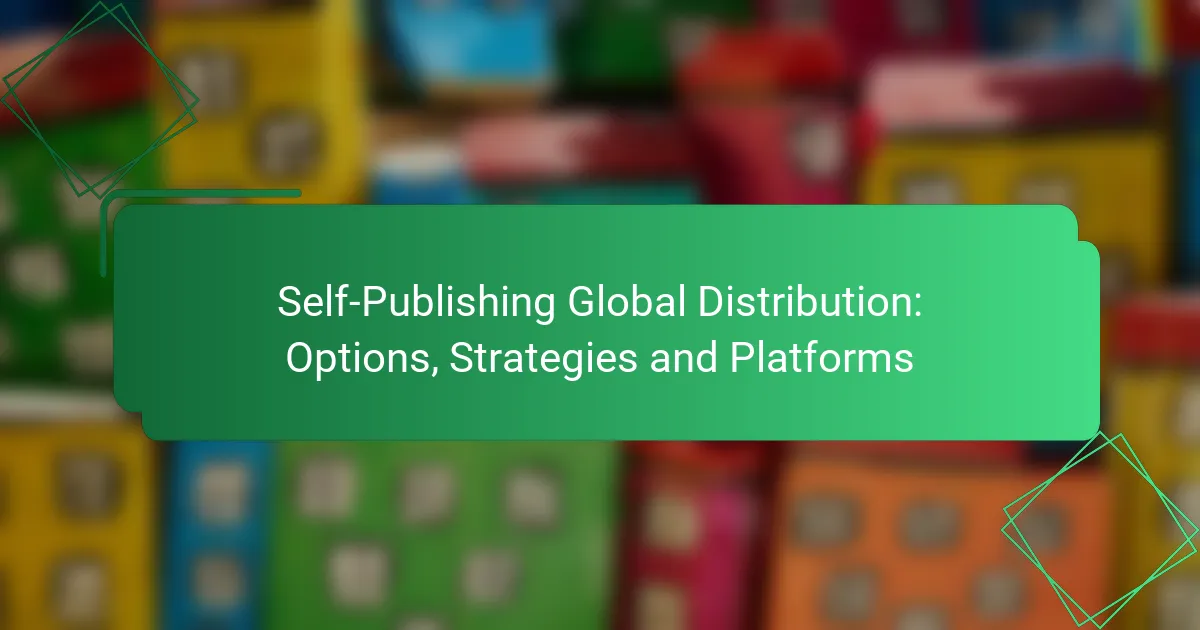Self-publishing offers authors a variety of platforms for global distribution, including Amazon Kindle Direct Publishing, IngramSpark, and Kobo Writing Life. Choosing the right distribution strategy is essential, as it impacts your book’s visibility and sales potential. By understanding the unique features of each platform and the associated costs, you can effectively align your publishing goals with your target audience’s needs.
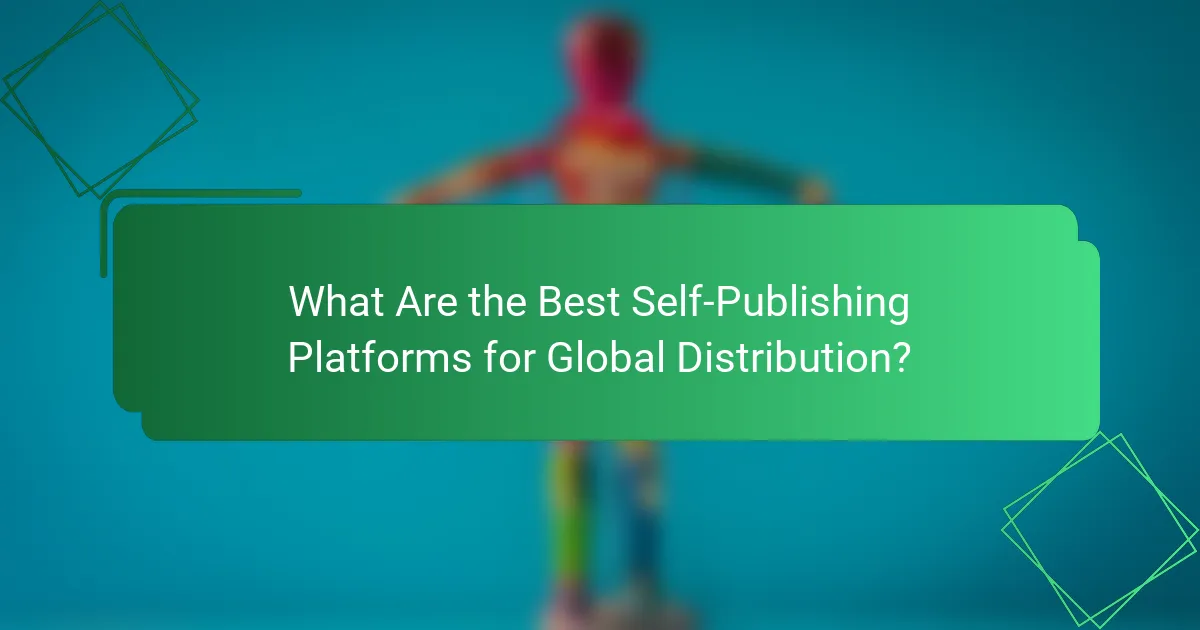
What Are the Best Self-Publishing Platforms for Global Distribution?
The best self-publishing platforms for global distribution include Amazon Kindle Direct Publishing, IngramSpark, Kobo Writing Life, Draft2Digital, and Smashwords. Each platform offers unique features and benefits that cater to different author needs, making it essential to choose the one that aligns with your publishing goals.
Amazon Kindle Direct Publishing
Amazon Kindle Direct Publishing (KDP) is one of the most popular platforms for self-publishing eBooks and paperbacks. It allows authors to reach millions of readers worldwide through Amazon’s extensive marketplace.
KDP offers a straightforward setup process, enabling authors to publish their work within hours. Authors can earn royalties of up to 70% on eBooks priced between $2.99 and $9.99, while paperback royalties are typically around 60% after printing costs.
IngramSpark
IngramSpark is a robust platform for authors looking to distribute print books and eBooks globally. It connects authors with a vast network of retailers, libraries, and online platforms, enhancing visibility.
While IngramSpark charges a setup fee, it provides extensive distribution options, including access to bookstores and libraries that may not be available through other platforms. Authors should consider the initial costs against the potential reach and sales opportunities.
Kobo Writing Life
Kobo Writing Life is an excellent choice for authors targeting international markets, particularly in Canada and Europe. The platform allows authors to publish eBooks easily and offers competitive royalty rates of up to 70%.
Kobo also features promotional tools and insights into reader behavior, helping authors tailor their marketing strategies. It’s particularly beneficial for authors who want to reach readers in regions where Kobo has a strong presence.
Draft2Digital
Draft2Digital simplifies the self-publishing process by distributing eBooks to multiple retailers, including Apple Books, Barnes & Noble, and more. This platform is user-friendly and offers free formatting tools to help authors prepare their manuscripts.
Authors earn around 60% of the retail price after distribution fees, making it a cost-effective option for wide-reaching distribution. Draft2Digital’s customer service is also highly rated, providing support throughout the publishing journey.
Smashwords
Smashwords is a veteran in the self-publishing industry, offering authors the ability to distribute eBooks to various retailers and libraries. It provides a unique catalog of indie titles, appealing to niche markets.
Authors can set their own prices and earn royalties ranging from 60% to 80% depending on the distribution channel. Smashwords also offers promotional opportunities, such as inclusion in their annual sales events, which can boost visibility and sales.

How to Choose the Right Distribution Strategy?
Selecting the right distribution strategy for self-publishing involves understanding the differences between direct and aggregator methods, considering global reach, and analyzing your target audience. Each approach has unique benefits and trade-offs that can significantly impact your book’s visibility and sales.
Direct vs. Aggregator Distribution
Direct distribution means selling your book through your own website or platforms like Amazon KDP, where you retain more control over pricing and royalties. In contrast, aggregator distribution involves using services like Draft2Digital or IngramSpark, which distribute your book to multiple retailers, often simplifying the process but taking a cut of your earnings.
When choosing between these options, consider your technical skills and marketing capabilities. Direct distribution may require more effort in promotion, while aggregators can help reach a wider audience with less hassle. However, aggregators may limit your control over pricing and promotional strategies.
Global Reach Considerations
Expanding your book’s distribution globally can significantly increase your potential readership. Consider platforms that offer international distribution, such as Amazon, Apple Books, or Kobo, which can help you reach markets in Europe, Asia, and beyond.
Be aware of regional preferences and regulations. For instance, pricing strategies may differ in the EU compared to the US, and some countries may have specific tax implications for digital sales. Researching local markets can help tailor your approach effectively.
Target Audience Analysis
Understanding your target audience is crucial for selecting the right distribution strategy. Analyze demographics such as age, location, and reading preferences to determine where your potential readers are most likely to shop for books.
Utilize tools like Google Analytics or social media insights to gather data on your audience’s behavior. This information can guide your choice between direct and aggregator distribution, ensuring that your strategy aligns with where your readers are most active and engaged.
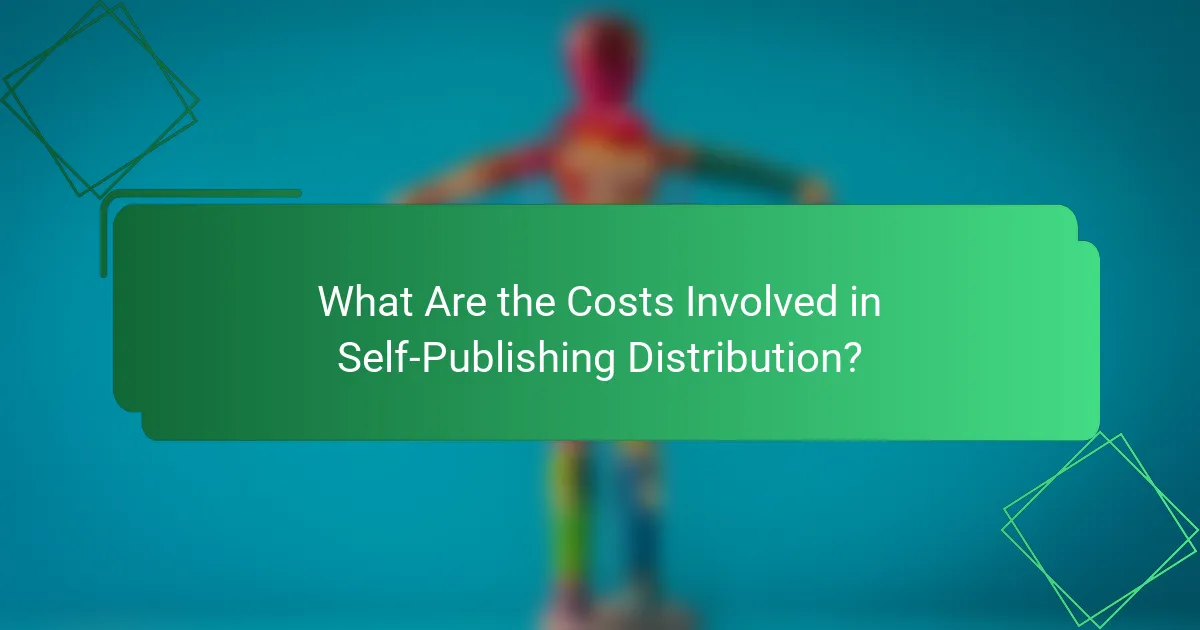
What Are the Costs Involved in Self-Publishing Distribution?
The costs of self-publishing distribution can vary widely based on the chosen platforms, formats, and marketing strategies. Understanding these expenses is crucial for budgeting and maximizing your return on investment.
Platform Fees
Most self-publishing platforms charge fees for distribution services. These can include upfront costs, royalties taken from sales, or both. For instance, platforms like Amazon Kindle Direct Publishing (KDP) may take around 30-65% of your book’s sale price, depending on the pricing model you choose.
It’s essential to compare different platforms to find the best fit for your needs. Some may offer free distribution but take a higher percentage of royalties, while others might charge a flat fee for access to wider distribution channels.
Print vs. Digital Costs
The costs associated with print and digital self-publishing can differ significantly. Digital publishing generally incurs lower upfront costs, often limited to formatting and cover design, while print publishing involves additional expenses such as printing, shipping, and inventory management.
For example, print-on-demand services allow you to avoid large upfront printing costs, but the per-unit cost can be higher than digital formats. Consider your target audience and sales strategy when deciding between print and digital options.
Marketing Expenses
Marketing is a crucial aspect of self-publishing distribution and can range from minimal to substantial investments. Basic strategies like social media promotion can be low-cost, while paid advertising, professional book trailers, or hiring publicists can quickly add up.
Establish a marketing budget early on and consider allocating around 10-20% of your expected revenue for promotional efforts. This investment can significantly enhance your book’s visibility and sales potential.
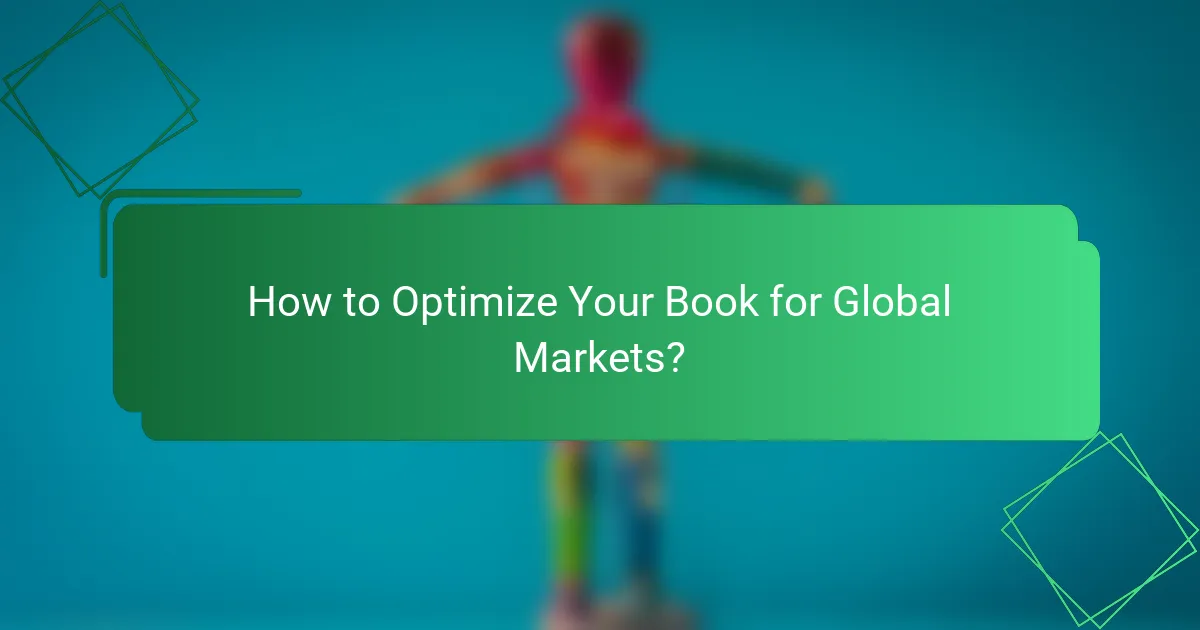
How to Optimize Your Book for Global Markets?
To optimize your book for global markets, focus on adapting content, design, and pricing to meet the preferences and expectations of diverse audiences. This involves understanding cultural nuances, localizing your text, and setting competitive prices based on regional standards.
Localization Techniques
Localization involves more than just translation; it requires adapting your content to resonate with local cultures and customs. Consider regional idioms, references, and even humor that may not translate well. Engaging local editors or beta readers can provide valuable insights into what works best in a specific market.
Additionally, pay attention to formatting conventions, such as date and time formats, measurement units, and even the layout of your book. For example, in some cultures, reading direction may differ, which can influence how you present your content.
Cover Design Adaptations
Your book cover is often the first impression potential readers will have, so it should reflect local tastes. Different regions may favor distinct color schemes, imagery, or typography that appeal to their cultural aesthetics. For instance, bright colors may be popular in some markets, while others might prefer a more subdued palette.
Consider testing multiple cover designs through A/B testing in different markets to see which resonates best. Engaging local designers can also ensure that your cover aligns with regional expectations and trends.
Pricing Strategies by Region
Pricing your book appropriately for different regions is crucial for maximizing sales. Research local market conditions to determine competitive pricing. For example, eBooks may be priced lower in developing markets compared to established ones, where readers may expect higher quality and are willing to pay more.
Consider using tiered pricing strategies, where you set different prices based on the purchasing power of each region. Offering promotional discounts or bundling your book with others can also attract more readers. Always keep an eye on currency fluctuations and adjust your pricing accordingly to maintain competitiveness.
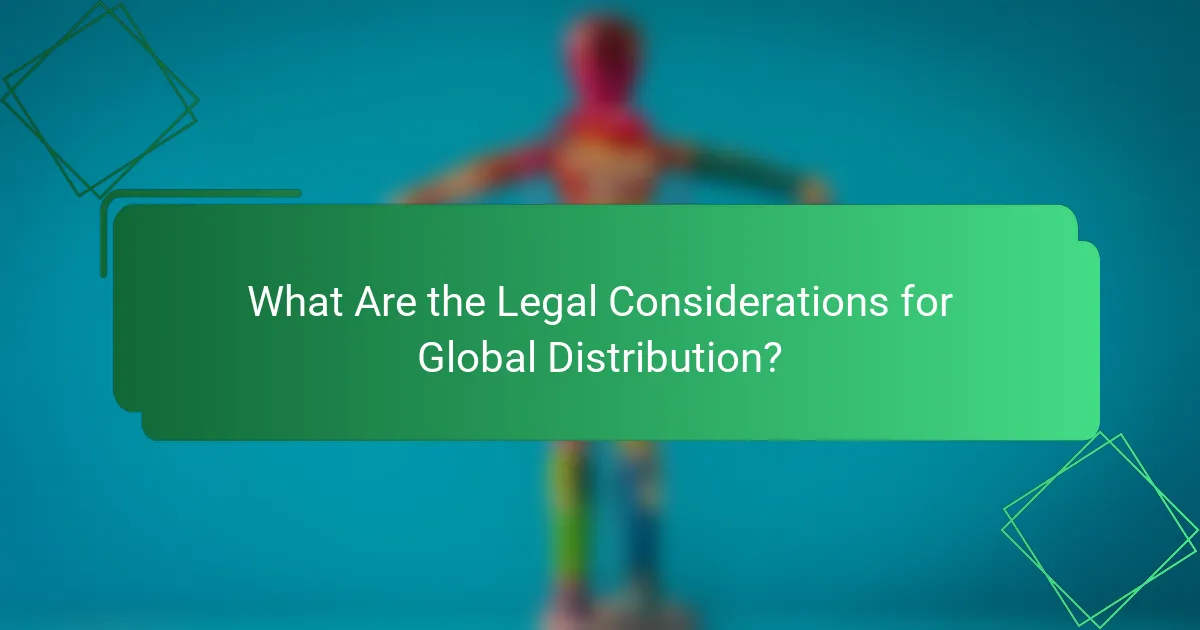
What Are the Legal Considerations for Global Distribution?
Legal considerations for global distribution include copyright laws, licensing agreements, and compliance with local regulations. Authors must ensure their work is protected and that they understand the legal frameworks of the countries where they distribute their content.
Copyright and Intellectual Property Rights
Copyright laws vary significantly across countries, affecting how authors can distribute their work globally. It’s crucial to register your copyright in key markets to protect your intellectual property. Consider using international treaties like the Berne Convention to help safeguard your rights abroad.
Licensing Agreements
Licensing agreements dictate how your work can be used by others. When distributing globally, ensure that these agreements are clear and compliant with local laws. For example, some countries may require specific terms regarding royalties or distribution rights that differ from your home country.
Tax Implications and Royalties
Authors must be aware of tax implications when earning royalties from international sales. Different countries may impose withholding taxes on royalties, which can affect your earnings. Research tax treaties between your country and the countries where you sell to minimize tax liabilities.
Compliance with Local Regulations
Each country has its own regulations regarding content distribution, including restrictions on certain topics or types of media. Familiarize yourself with these regulations to avoid legal issues. For instance, some regions may have strict rules about adult content or political material that could impact your distribution strategy.
